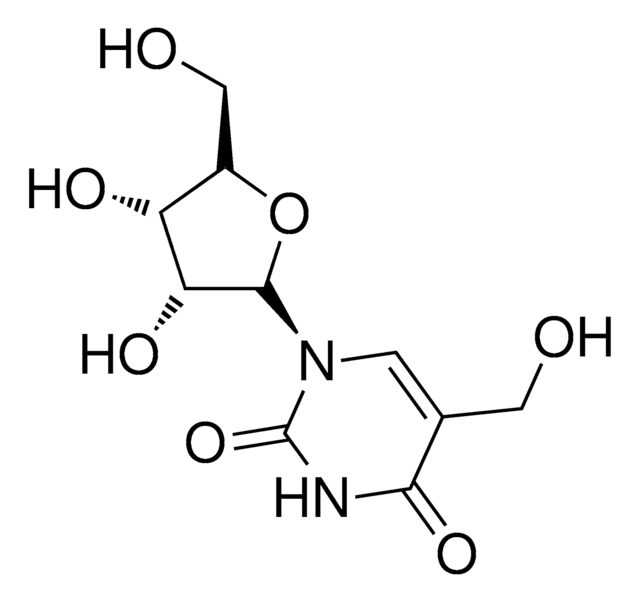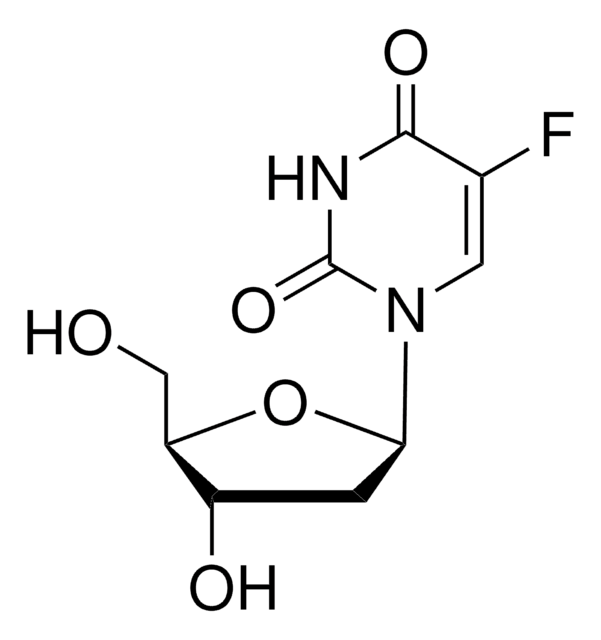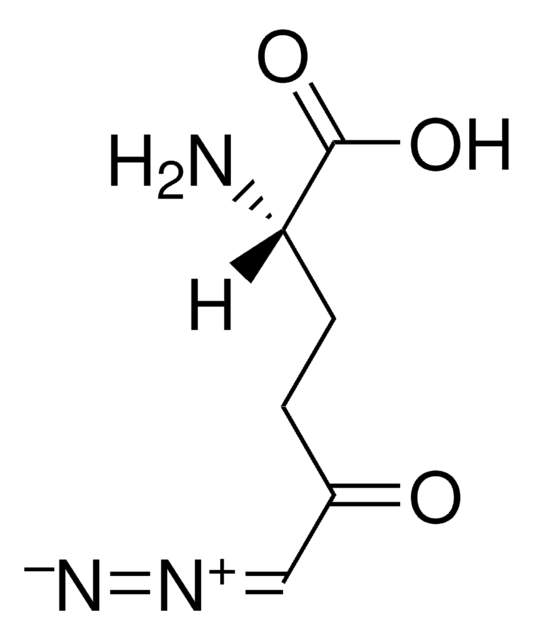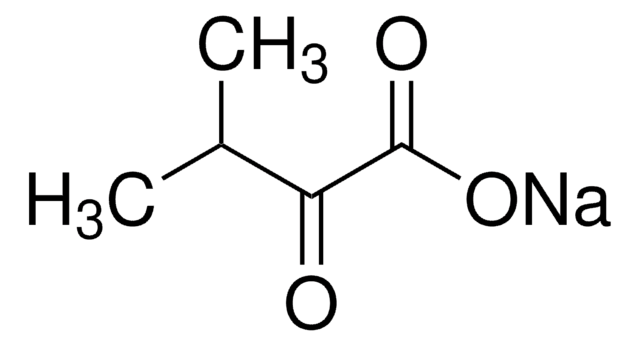SML0404
6,8-Bis(benzylthio)-octanoic acid
≥98% (HPLC)
Sinônimo(s):
6,8-Bis[(phenylmethyl)thio-octanoic acid, CPI-613
About This Item
Produtos recomendados
Nível de qualidade
Ensaio
≥98% (HPLC)
Formulário
powder
cor
white to beige
solubilidade
DMSO: 15 mg/mL (clear solution)
temperatura de armazenamento
2-8°C
cadeia de caracteres SMILES
OC(=O)CCCCC(CCSCc1ccccc1)SCc2ccccc2
InChI
1S/C22H28O2S2/c23-22(24)14-8-7-13-21(26-18-20-11-5-2-6-12-20)15-16-25-17-19-9-3-1-4-10-19/h1-6,9-12,21H,7-8,13-18H2,(H,23,24)
chave InChI
ZYRLHJIMTROTBO-UHFFFAOYSA-N
Aplicação
- to study its effects on neurite outgrowth in primary mouse dorsal root ganglia cells
- to induce α-smooth muscle actin (αSMA) and pro-collagen I expression and to assess PDH enzyme activity in whole-cell lysates
- to validate basal respiration in tissue respirometry
Ações bioquímicas/fisiológicas
Palavra indicadora
Warning
Frases de perigo
Declarações de precaução
Classificações de perigo
Aquatic Acute 1 - Aquatic Chronic 1
Código de classe de armazenamento
11 - Combustible Solids
Classe de risco de água (WGK)
WGK 3
Ponto de fulgor (°F)
Not applicable
Ponto de fulgor (°C)
Not applicable
Escolha uma das versões mais recentes:
Certificados de análise (COA)
Não está vendo a versão correta?
Se precisar de uma versão específica, você pode procurar um certificado específico pelo número do lote ou da remessa.
Já possui este produto?
Encontre a documentação dos produtos que você adquiriu recentemente na biblioteca de documentos.
Os clientes também visualizaram
Nossa equipe de cientistas tem experiência em todas as áreas de pesquisa, incluindo Life Sciences, ciência de materiais, síntese química, cromatografia, química analítica e muitas outras.
Entre em contato com a assistência técnica









